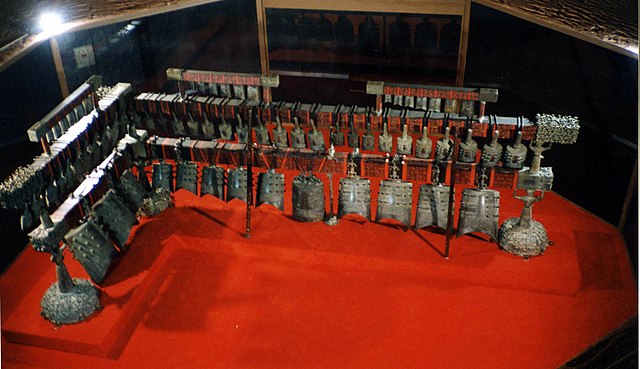Campanology is the scientific and musical study of bells. It encompasses the technology of bells – how they are founded, tuned and rung – as well as the history, methods, and traditions of bellringing as an art.
A bell
Change ringing in a church in Devon, England
The bells of St Bees Priory, England shown in the "up" position. When being rung they swing through a full circle from mouth upwards round to mouth upwards, and then back again.
Peal board at St Peter and St Paul Church, Chatteris, Cambridgeshire, commemorating the ringing of a peal in 1910; 5,040 changes were rung in two hours and forty-nine minutes.
A bell is a directly struck idiophone percussion instrument. Most bells have the shape of a hollow cup that when struck vibrates in a single strong strike tone, with its sides forming an efficient resonator. The strike may be made by an internal "clapper" or "uvula", an external hammer, or—in small bells—by a small loose sphere enclosed within the body of the bell.
13th c. BC bell, Shang dynasty
Chinese bronze bell, 18th-16th century BC
Bianzhong of Marquis Yi of Zeng, dated 433 BC.
English full-circle bells shown in the "down" position, in which they are normally left between ringing sessions.








